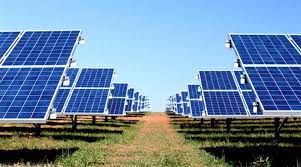
Electricity bills are one of those monthly mysteries: they land, they’re paid, and they disappear into the archives. But what if your store was quietly overpaying — every month, for years?
Quick answer? A commercial energy audit identifies where and how your business uses energy, uncovers inefficiencies, and provides a roadmap to cut consumption and costs. It’s one of the most effective ways to reduce retail store energy bills without sacrificing performance or comfort.
Let’s break down how energy audits work — and why they’re no longer just “nice to have.”
What is a commercial energy audit, really?
Think of it like a health check — but for your power usage.
A commercial energy audit analyses how much electricity (and sometimes gas or water) your business uses, where it’s going, and where it’s being wasted. You get a customised report with:
- Equipment performance analysis (e.g. lighting, HVAC, fridges)
- Energy use trends by day, week or season
- Recommendations for savings and ROI estimates
- Advice on technology upgrades or behavioural changes
An energy audit doesn’t just offer data — it offers direction. It’s like looking under the hood and finding out why the engine’s guzzling more than it should.
Why is an energy audit worth doing for small and medium businesses?
Because small and medium-sized businesses (SMBs) are often the most at risk of overpaying.
Here’s why:
- Equipment is often inherited, outdated, or running inefficiently
- Power use isn’t tracked or monitored beyond the monthly bill
- Teams aren’t trained on energy-saving behaviours
- Business owners are time-poor and stretched thin
A bakery in suburban Brisbane discovered their display fridge was costing $120/month to run — more than their oven. After replacing it, they saw ROI in 11 months.
Without an audit? That would’ve gone unnoticed.
What are the biggest benefits of a commercial energy audit?
Here are the game-changers:
1. Lower Electricity Bills
Identifying inefficiencies often leads to 10–30% energy savings. That’s money back in your pocket — every month.
2. Faster ROI on Upgrades
With audit-backed data, you can prioritise the best investments — whether that’s LEDs, a new HVAC unit, or smart controls.
3. Less Equipment Downtime
Audits can reveal underperforming or overworked equipment, helping prevent costly failures and repairs.
4. Improved Comfort & Staff Productivity
Better lighting, climate control, and airflow improve the work environment — and happy staff are productive staff.
5. Access to Rebates & Grants
Some government and energy programs require an audit before offering rebates or energy-efficiency funding.
A chain of chemists in Victoria cut their HVAC spend by 25% across five locations by acting on audit insights. It wasn’t about cutting corners — it was about cutting waste.
Who conducts these audits, and what’s involved?
Energy audits in Australia are typically performed by:
- Accredited energy assessors
- Energy efficiency consultants
- Utility providers (sometimes at low or no cost)
There are three levels of audits:
| Audit Level | Best For | What It Covers |
|---|---|---|
| Level 1 | Small sites, low energy bills | Basic walkthrough, utility analysis, low-cost fixes |
| Level 2 | Most SMEs | Detailed site inspection, equipment-level assessment, savings forecast |
| Level 3 | Large or complex buildings | Real-time metering, modelling, and full system analysis |
Most retail businesses benefit from a Level 1 or 2 audit. The cost typically ranges from $500 to $3,000 — but many providers offer rebates or offset the cost through energy contracts.
What kind of savings can you expect?
It depends on the building type, size, and current habits — but here’s what audits commonly uncover:
- Lights left on overnight: $30–$90/month
- Inefficient HVAC settings: 10–25% total energy savings
- Old fridges/freezers: Up to $500/year in wasted energy
- Poor insulation or air leaks: Extra HVAC load = higher bills
One café in Adelaide had a broken air curtain at their front door. It was costing them 17% more in heating. The audit spotted it — and the $180 fix paid off in less than two months.
How do energy audits help reduce retail store energy bills?
In retail, appearances matter — but that shouldn’t come with a hefty power bill.
An audit helps by:
- Zoning lighting and HVAC use by peak trading hours
- Monitoring high-consumption displays or signage
- Setting auto-off controls on POS gear or backroom equipment
- Streamlining appliance schedules so equipment isn’t running unnecessarily
Retailers who act on audit insights tend to make changes that feel minor — but save major dollars over time.
That’s the power of Consistency — one of Cialdini’s persuasion principles. Small changes, repeated consistently, deliver big results.
FAQ: Commercial Energy Audits
Q: How long does a commercial energy audit take?
A: For small businesses, 2–4 hours on-site. Larger audits may take a full day plus reporting time.
Q: Will an audit disrupt my business?
A: Not significantly. Assessors work around your operations and often conduct after-hours analysis.
Q: Can I do an audit myself?
A: You can do a basic walkthrough (lights, plugs, timers) — but a certified audit provides real savings data, ROI forecasting, and access to professional advice.
Final thought
Energy audits aren’t just for big corporations. They’re for anyone who’s ever scratched their head at a power bill or wondered if that fridge humming away out back is costing more than it’s worth.
By understanding how and where your business uses energy, you open the door to smarter upgrades, stronger sustainability, and measurable savings. And the best part? Once you know the numbers, you’re in control — no more surprises, no more guesswork.
Whether you’re running a shopfront, studio, café or clinic, the smartest way to start cutting costs is by understanding what you’re already using. That’s how you reduce retail store energy bills with purpose — not just hope.
